Quoted Text
"Because it is multi-scale, I had to make an arbitrary decision as to where to place it in our numbering system, so I gave it a 1/48 scale number, PE 4803. Here's Peter's description on how it's used, taken from the instructions:
"The various shapes of rigging eyelets supplied in this set can be used at various locations on the wings and fuselage of vintage aircraft, both biplane and early monoplane types. The principle is to fit a small retaining loop against the root or top of the wing struts that will allow a rigging wire such as Caenis thread to be fed through the loops to form the cross-bracing found commonly between the wings on thee types of aircraft. Previously the modeller had to drill holes through the wings or struts to allow the rigging lines to be threaded through, but this could also weaken the structure somewhat. These rigging eyes can be used on most scales of aircraft, but obviously the smaller scales will benefit greatly as they will provide an easier means with which to rig the aircraft more effectively. The oval eyelets, etched parts 1, can be used by placing on a flat surface and gluing one end into place. When the glue is dry, the unsecured end may be lifted slightly and the rigging line threaded through. When the rigging is complete the eyelet can be flattened back down onto the surface and secured into place. Alternatively they can befolded to 90º and fitted to the tops and bottoms of struts before the strut is fixed into place, so that the loops protrude from both sides. The right-angled quarter eyelets, etched parts 2, can be used for fitting to the inside and outside of the struts at the roots with the main spanwise cross-bracing threaded inbetween them as shown in Diagram 1. Half-ovals, etched parts 3, can be used for attaching the ends of rigging lines to the insides of the wings at the fuselage joints or for attaching lines to the fuselage.Etched parts 4 and 5 are quarter eyelets similar to etched parts 2, but with acute angles, parts 4, and obtuse angles, parts 5. These are for fitting to the struts fore and aft at the roots, so that the chordwise cross-bracing may be threaded between them as shown in Diagram 2. When the rigging has been completed, the eyelets may be flattened into the root angle between the wing and strut using a small flat blade such as a jewellers screwdriver. This is only a suggestion, and the eyelets may be left as they are and painted over if desired."
The set should be with us in about 3 weeks, and you can order now (or you will be as soon as I get it added to the website here.










